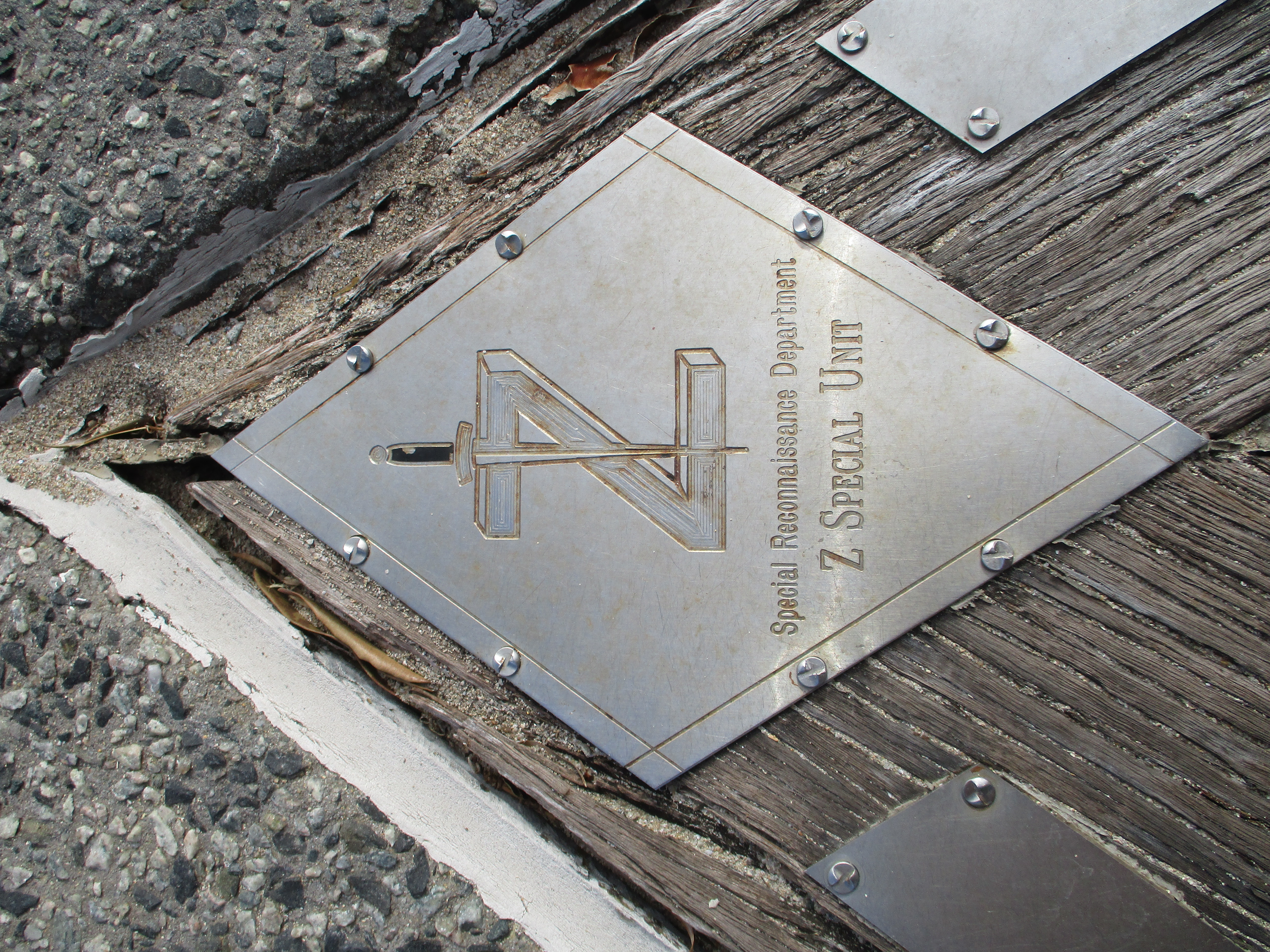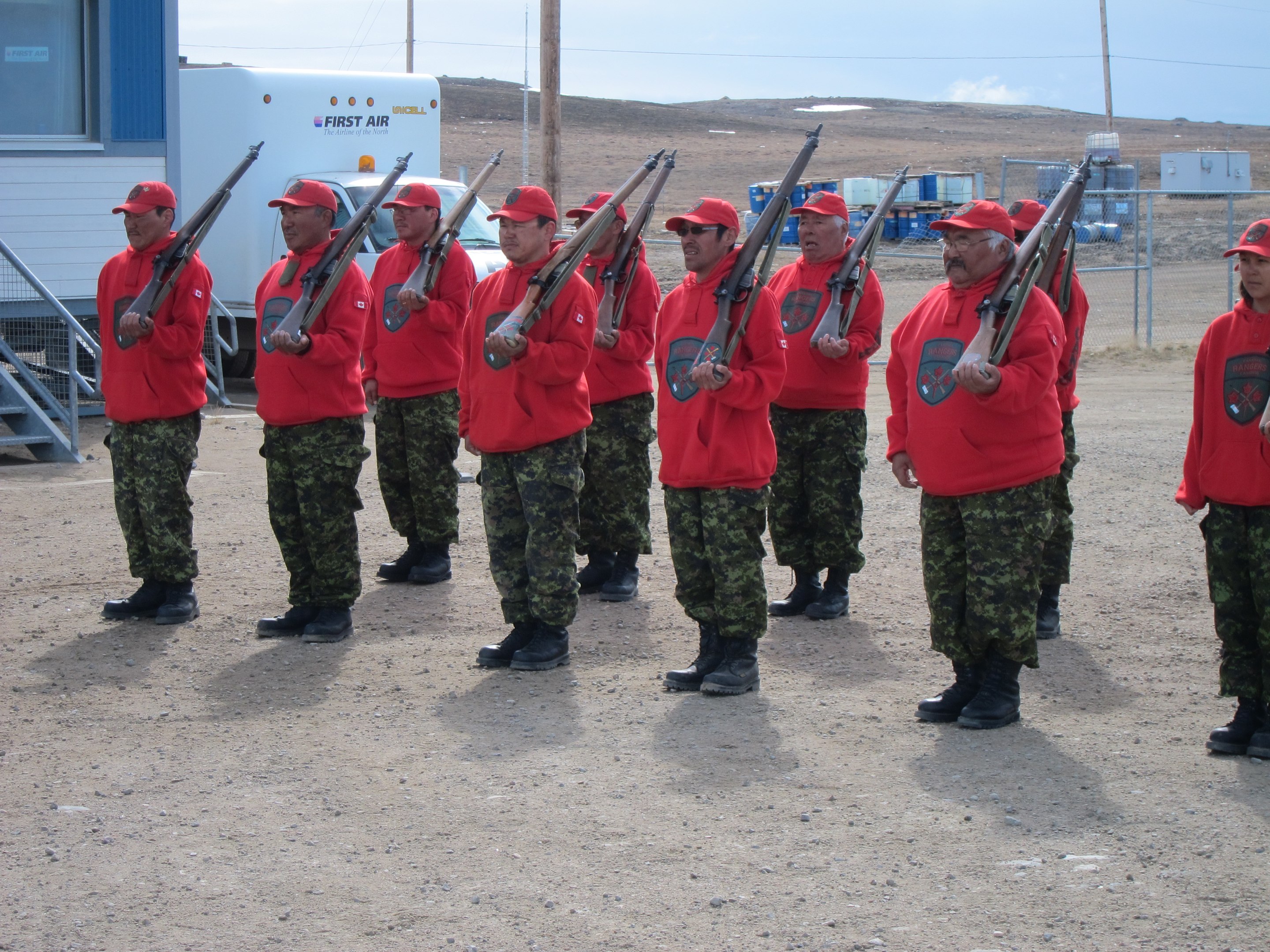|
Regional Force Surveillance Units
The Regional Force Surveillance Units (RFSUs) are specialised infantry units of the Australian Army Reserve responsible for patrolling northern Australia. Collectively, the RFSUs form the Regional Force Surveillance Group commanded by a Colonel based at the 2nd Division Headquarters in Sydney. The RFSUs conduct regular operational patrols during peacetime, and are composed primarily of Reservists who live within the area of operations. There are currently three battalion-sized RFSUs: * North-West Mobile Force (NORFORCE) (responsible for the Northern Territory and Kimberley region of Western Australia) * The Pilbara Regiment (responsible for the Pilbara region of Western Australia) * 51st Battalion, Far North Queensland Regiment (responsible for North Queensland) Role The RFSUs are unique unconventional units whose mission is to conduct long range reconnaissance and surveillance patrols in the sparsely populated and remote regions of northern Australia. Unlike most Austra ... [...More Info...] [...Related Items...] OR: [Wikipedia] [Google] [Baidu] |
Infantry
Infantry is a military specialization which engages in ground combat on foot. Infantry generally consists of light infantry, mountain infantry, motorized infantry & mechanized infantry, airborne infantry, air assault infantry, and marine infantry. Although disused in modern times, heavy infantry also commonly made up the bulk of many historic armies. Infantry, cavalry, and artillery have traditionally made up the core of the combat arms professions of various armies, with the infantry almost always comprising the largest portion of these forces. Etymology and terminology In English, use of the term ''infantry'' began about the 1570s, describing soldiers who march and fight on foot. The word derives from Middle French ''infanterie'', from older Italian (also Spanish) ''infanteria'' (foot soldiers too inexperienced for cavalry), from Latin '' īnfāns'' (without speech, newborn, foolish), from which English also gets '' infant''. The individual-soldier term ''infantry ... [...More Info...] [...Related Items...] OR: [Wikipedia] [Google] [Baidu] |
Z Special Unit
Z Special Unit () was a joint Allied special forces unit formed during the Second World War to operate behind Japanese lines in South East Asia. Predominantly Australian, Z Special Unit was a specialist reconnaissance and sabotage unit that included British, Dutch, New Zealand, Timorese and Indonesian members, predominantly operating on Borneo and the islands of the former Dutch East Indies.Horner 1989, p. 26 The unit carried out a total of 81 covert operations in the South West Pacific theatre, with parties inserted by parachute or submarine to provide intelligence and conduct guerrilla warfare. The best known of these missions were Operation Jaywick and Operation Rimau, both of which involved raids on Japanese shipping in Singapore Harbour; the latter of which resulted in the deaths of 23 commandos either in action or by execution after capture.Horner 1989, p. 26 Although the unit was disbanded after the war, many of the training techniques and operational procedures empl ... [...More Info...] [...Related Items...] OR: [Wikipedia] [Google] [Baidu] |
Canadian Rangers
, colors =Red and green , march = , mascot = , battles = Second World WarCold War , anniversaries = , notable_commanders = , identification_symbol_2_label = , current_commander = Lieutenant-General Jean-Marc Lanthier, Commander of the Canadian Army , ceremonial_chief = , ceremonial_chief_label = , colonel_of_the_regiment = , website = , identification_symbol = , identification_symbol_label = NATO Map Symbol(2017) The Canadian Rangers (french: links=no, Rangers canadiens) are a 5,000-strong sub-component of the Canadian Armed Forces reserve that provide a limited military presence in Canada's sparsely settled northern, coastal, and isolated areas where it would not be economically or practically viable to have conventional Army units. Formally established on May 23, 1947, a primary role of this part-time force is to conduct surveillance or sovereignty patrols (SOV PATS) as required. Some Canadian Rangers also conduct inspections of the North Warning System (N ... [...More Info...] [...Related Items...] OR: [Wikipedia] [Google] [Baidu] |
Northern Command (Australia)
The Northern Command is a joint operational Australian Defence Force formation. Northern Command is responsible for the planning and conduct of operations to the north of Australia during peacetime and wartime. In addition, Northern Command manages the defence aspects of the multi-agency Maritime Border Command. The command's surveillance units include the three army Regional Force Surveillance Units: Norforce, the Pilbara Regiment in Western Australia, and the 51st Battalion, Far North Queensland Regiment. Northern Command's area of operations covers Queensland and the Northern Territory above 19 degrees south and the Kimberley and Pilbara Districts of Western Australia. Northern Command's headquarters are located at Larrakeyah Barracks in Darwin, Northern Territory. Roles and responsibilities The Northern Command's roles and responsibilities include the following, as of 2003: * the conduct of military surveillance and response operations * direct, coordinate and support all ... [...More Info...] [...Related Items...] OR: [Wikipedia] [Google] [Baidu] |
Torres Strait Islanders
Torres Strait Islanders () are the Indigenous Melanesian people of the Torres Strait Islands, which are part of the state of Queensland, Australia. Ethnically distinct from the Aboriginal people of the rest of Australia, they are often grouped with them as Indigenous Australians. Today there are many more Torres Strait Islander people living in mainland Australia (nearly 28,000) than on the Islands (about 4,500). There are five distinct peoples within broader designation of Torres Strait Islander people, based partly on geographical and cultural divisions. There are two main Indigenous language groups, Kalaw Lagaw Ya and Meriam Mir. Torres Strait Creole is also widely spoken, as a language of trade and commerce. The core of Island culture is Papuo- Austronesian and the people traditionally a seafaring nation. There is a strong artistic culture, particularly in sculpture, printmaking and mask-making. Demographics In June 1875 a measles epidemic killed about 25% of the popula ... [...More Info...] [...Related Items...] OR: [Wikipedia] [Google] [Baidu] |
Indigenous Australians
Indigenous Australians or Australian First Nations are people with familial heritage from, and membership in, the ethnic groups that lived in Australia before British colonisation. They consist of two distinct groups: the Aboriginal peoples of the Australian mainland and Tasmania, and the Torres Strait Islander peoples from the seas between Queensland and Papua New Guinea. The term Aboriginal and Torres Strait Islander peoples or the person's specific cultural group, is often preferred, though the terms First Nations of Australia, First Peoples of Australia and First Australians are also increasingly common; 812,728 people self-identified as being of Aboriginal and/or Torres Strait Islander origin in the 2021 Australian Census, representing 3.2% of the total population of Australia. Of these indigenous Australians, 91.4% identified as Aboriginal; 4.2% identified as Torres Strait Islander; while 4.4% identified with both groups. [...More Info...] [...Related Items...] OR: [Wikipedia] [Google] [Baidu] |
Aboriginal Tracker
Aboriginal trackers were enlisted by Europeans in the years following British colonisation of Australia, to assist them in exploring the Australian landscape. The excellent tracking skills of these Aboriginal Australians were advantageous to settlers in finding food and water and locating missing persons, capturing bushrangers and dispersing other groups of Indigenous peoples. The first recorded deployment of Aboriginal trackers by Europeans in Australia was in 1791 when Watkin Tench utilised Eora men Colbee and Balloderry to find a way to the Hawkesbury River. In 1795, an Aboriginal guide led Henry Hacking to the Cowpastures area where the lost First Fleet cattle were found. In 1802, Dharawal men Gogy, Budbury and Le Tonsure with Gandangara men Wooglemai and Bungin assisted Ensign Francis Barrallier in his explorations into the Blue Mountains. There are many other examples of explorers, squatters, military/paramilitary groups, naval missions, and police utilising Aboriginal assi ... [...More Info...] [...Related Items...] OR: [Wikipedia] [Google] [Baidu] |
NORFORCE (2006 S0270 01)
The NORFORCE (North-West Mobile Force) is an infantry regiment of the Australian Army Reserve. Formed in 1981, the regiment is one of three Regional Force Surveillance Units (RFSUs) employed in surveillance and reconnaissance of the remote areas of Northern Australia. It consists of a regimental headquarters, four surveillance squadrons, and an operational support squadron and training squadron. History In the late 1970s and early 1980s the need for a military presence in the north of Australia was recognised, with an integrated land, sea and air surveillance network developed in response. Part of this involved the raising of Australian Army Reserve infantry units known as Regional Force Surveillance Units (RFSUs) that would act as "eyes and ears" in the north. NORFORCE was raised for operations in the Northern Territory and the Kimberley region of Northern Australia and was formed as an independent company on 1 July 1981, from the 7th Independent Rifle Company, and was based i ... [...More Info...] [...Related Items...] OR: [Wikipedia] [Google] [Baidu] |
Larrakeyah Barracks
Larrakeyah Barracks, incorporating , is the main base for the Australian Defence Force in the Northern Territory of Australia, and occupies the headland west of the suburb of Larrakeyah in the capital, Darwin. It was established in 1932–33, with building commencing in earnest in 1934, although many of the oldest structures were built in the early years of World War II. The name Larrakeyah is a transcription of the name of the Australian Aborigine tribe known also as the Larrakia people, the traditional owners of where Darwin was built and its surrounding areas. Geography The base is on a mostly level headland running east–west, some 25 metres above the ocean. Darwin Naval Base is on a lower area on the south side, incorporating some reclaimed land. The base is bounded to the east by the suburb of Larrakeyah, to the south by HMAS Coonawarra and the boat harbour on Darwin Harbour, to the west by Emery Point overlooking the approaches to Darwin Harbour, and the north by ... [...More Info...] [...Related Items...] OR: [Wikipedia] [Google] [Baidu] |
6th Brigade (Australia)
The 6th Combat Support Brigade is an Australian Army brigade. First formed in 1912 as a Militia formation to provide training under the compulsory training scheme, the brigade was re-raised during the First World War as an infantry unit of the all volunteer Australian Imperial Force. It subsequently served at Gallipoli and in France and Belgium on the Western Front. In the 1920s, as part of a reorganisation of the Australian Army, it became part of the 3rd Military District of the Citizens Military Force, encompassing units from Victoria and South Australia. In 1991, it became part of the Ready Reserve Scheme, based at Enoggera Barracks, in Brisbane, Queensland, before being disbanded in 1996 when the scheme was discontinued. The brigade was re-raised on 1 March 2010 to oversee the Army's command support and intelligence, surveillance, target acquisition and reconnaissance (CS & ISTAR) units. History The 6th Brigade traces its origins to 1912, when it was formed as a Militi ... [...More Info...] [...Related Items...] OR: [Wikipedia] [Google] [Baidu] |
Operation Resolute
Operation Resolute is the Australian Defence Force's contribution to the Australian governments effort to protect Australia's borders through surveillance and response. Operation Resolute began on 17 July 2006 and consolidated a number of previous ADF operations, including Operation Relex. Operation Resolute is commanded by the joint civilian-military Maritime Border Command and the ADF contributes Royal Australian Navy ships, Royal Australian Air Force aircraft and patrols from the Australian Army's Regional Force Surveillance Units as required. Defence personnel and civilians deployed may be eligible for the Australian Operational Service Medal, specifically the Australian Operational Service Medal – Border Protection (AOSM-BP). Op Resolute 17 July 2006 to 16 July 2006 See also *Operation Sovereign Borders Operation Sovereign Borders (OSB) is a border protection operation led by the Australian Defence Force, aimed at stopping maritime arrivals of asylum seekers ... [...More Info...] [...Related Items...] OR: [Wikipedia] [Google] [Baidu] |




